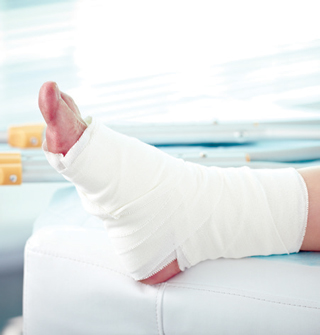
Skin manifestations of COVID-19 may appear like pressure injuries, a factor that should be noted during diagnosis and when filing federal reports, cautions the National Pressure Injury Advisory Panel.
COVID-19 infections can lead to blood coagulation problems, resulting in skin changes that appear purpuric (discolored) and quickly cause tissue death, the panel explains in a position statement.
“[Covid-19 skin injuries] mimic the appearance of deep tissue pressure injury, especially when they occur over tissue exposed to pressure and/or shear stress (e.g., sacrum, buttocks, heels) or under medical devices,” the panel reports. “If the [blood] vessels are significantly or fully occluded, then adequate reperfusion is not achievable even in the presence of reasonable repositioning and turning of the patient and the use of appropriate support surfaces.”
Due in part to this phenomenon, the COVID-19 crisis has rendered some prevention strategies impossible to achieve, making pressure injury formation unavoidable at times, NPIAP added.
With these issues in mind, NPIAP has taken the following positions on diagnosis and reporting of pressure injury during COVID-19 crisis situations (edited):
1. Before decisions are made about the avoidability or unavoidability of a pressure injury that developed during the COVID-19 crisis, all factors should be considered on a case-by-case basis, including both the intrinsic issues in the critically ill patient and the extrinsic issues in the healthcare facility at the time of the injury.
2. Before labeling purpuric skin manifestations (discolorations) in COVID-19 patients, consider that the skin manifestations of COVID-19 may mimic the appearance of pressure injuries and should be considered in the differential diagnosis.
3. Areas of skin discoloration or tissue injury on non-loaded anatomic locations (i.e. no history of pressure and/or shear stress, no use of a medical device) are most likely not pressure injuries.
4. When pressure injuries occur on anatomical locations likely subjected to pressure and/or shear stress in patients with COVID-19, the pressure injury may be unavoidable if:
- Microvascular occlusions from COVID-19 increased the magnitude and severity of nonmodifiable risk to a level that preventive interventions were not able to be overcome despite reasonable efforts at prevention;
- Multiorgan dysfunction issues from critical illness ultimately affected the skin’s normal abilities to protect the body and remain resilient to injuries and trauma including pressure injuries; and,
- All reasonable efforts to provide evidence-based preventive care were attempted within the context of a health care system determined to be at crisis capacity.
“Going forward, healthcare providers will require better information and adequate quantities of equipment, supplies and personnel to maximize their ability to prevent pressure injury formation in future COVID-19 patients,” the NPIAP concluded.
The full position statement is available here.




